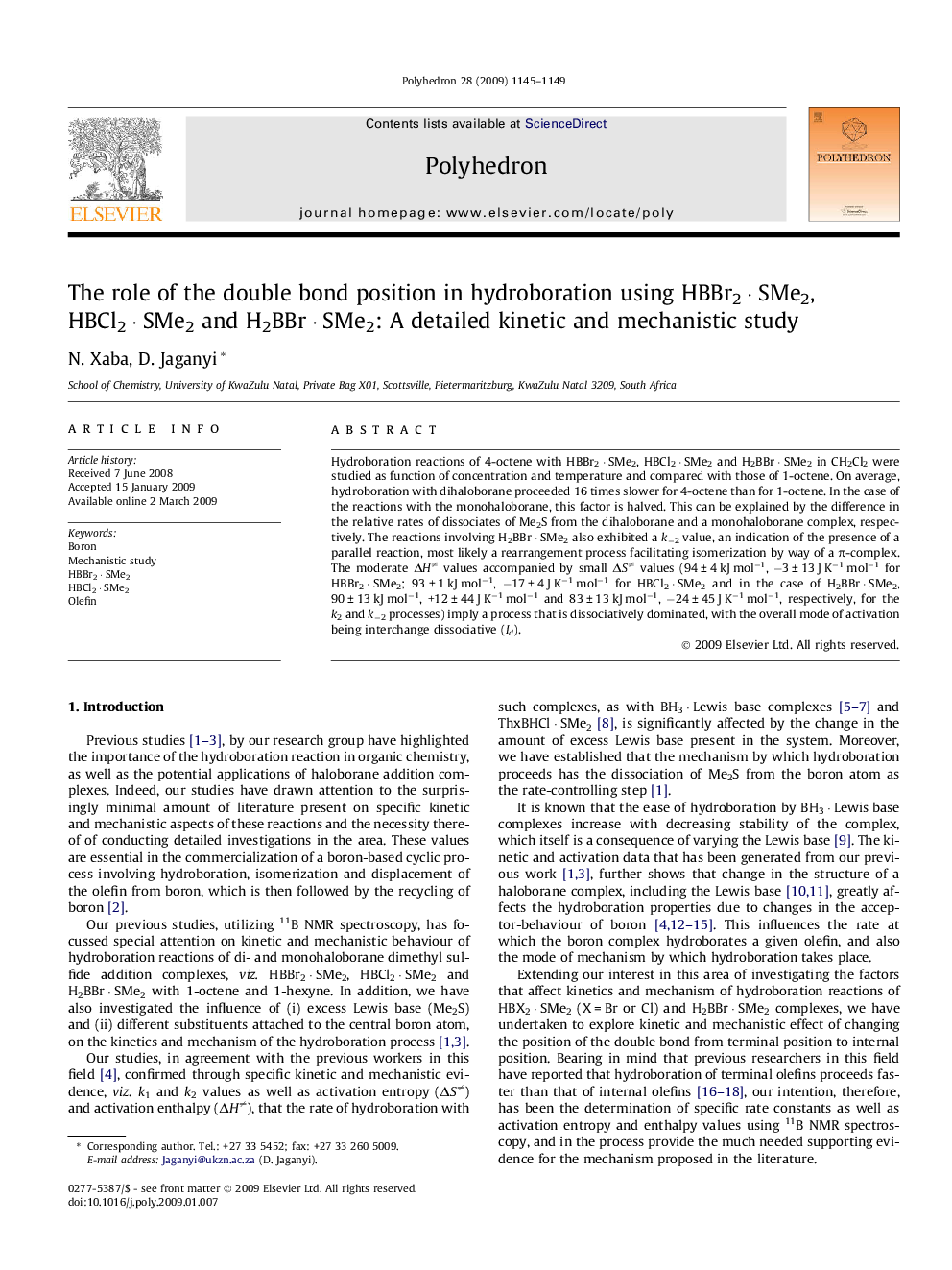| Article ID | Journal | Published Year | Pages | File Type |
|---|---|---|---|---|
| 1340254 | Polyhedron | 2009 | 5 Pages |
Hydroboration reactions of 4-octene with HBBr2 · SMe2, HBCl2 · SMe2 and H2BBr · SMe2 in CH2Cl2 were studied as function of concentration and temperature and compared with those of 1-octene. On average, hydroboration with dihaloborane proceeded 16 times slower for 4-octene than for 1-octene. In the case of the reactions with the monohaloborane, this factor is halved. This can be explained by the difference in the relative rates of dissociates of Me2S from the dihaloborane and a monohaloborane complex, respectively. The reactions involving H2BBr · SMe2 also exhibited a k−2 value, an indication of the presence of a parallel reaction, most likely a rearrangement process facilitating isomerization by way of a π-complex. The moderate ΔH≠ values accompanied by small ΔS≠ values (94 ± 4 kJ mol−1, −3 ± 13 J K−1 mol−1 for HBBr2 · SMe2; 93 ± 1 kJ mol−1, −17 ± 4 J K−1 mol−1 for HBCl2 · SMe2 and in the case of H2BBr · SMe2, 90 ± 13 kJ mol−1, +12 ± 44 J K−1 mol−1 and 83 ± 13 kJ mol−1, −24 ± 45 J K−1 mol−1, respectively, for the k2 and k−2 processes) imply a process that is dissociatively dominated, with the overall mode of activation being interchange dissociative (Id).
Graphical abstractExponential decay curve for hydroboration of 4-octene with HBBr2 · SMe2 in CH2Cl2 at 25 °C.Figure optionsDownload full-size imageDownload as PowerPoint slide
